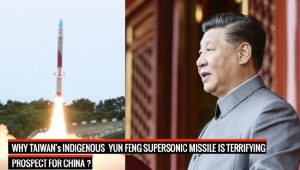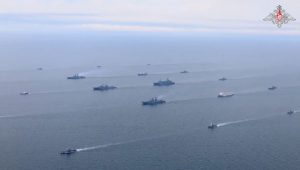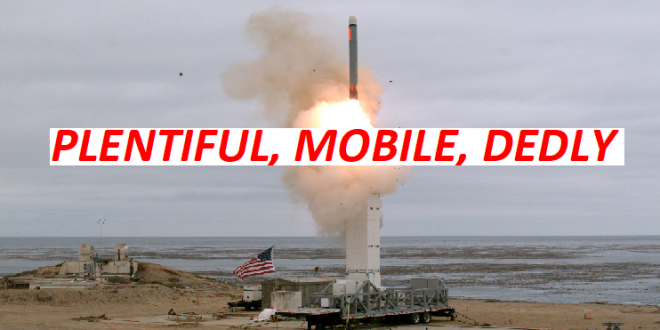18-09-2024
WASHINGTON/ BEIJING: The United States is amassing an arsenal of abundant and easily made anti-ship weapons as part of American efforts to deter China in the Indo-Pacific region and gear up US forces there.
Russia’s invasion of Ukraine has pushed US thinking toward a new philosophy “affordable mass,” as one missile industry CEO put it, speaking on condition of anonymity, referring to having plenty of relatively cheap weapons at the ready.
 “It’s a natural counter to what China has been doing,” said Euan Graham, a senior analyst with the Australian Strategic Policy Institute think tank, referring to the Chinese arsenal of ships and conventional ballistic missiles including those designed to attack vessels.
“It’s a natural counter to what China has been doing,” said Euan Graham, a senior analyst with the Australian Strategic Policy Institute think tank, referring to the Chinese arsenal of ships and conventional ballistic missiles including those designed to attack vessels.
The Pentagon and China’s Ministry of Defence did not immediately respond to requests for comment.
The United States has ramped up testing of its QUICKSINK weapon, an inexpensive and potentially plentiful bomb equipped with a low-cost GPS guidance kit and a seeker that can track moving objects. The US Air Force used a B-2 stealth bomber during a test last month in the Gulf of Mexico to strike a target ship with QUICKSINK.
China will still have a large advantage in sheer numbers of anti-ship missiles, according to experts, and can base them on its home territory but increasing US production of QUICKSINK would narrow that gap by putting China’s 370 or so warships at more risk during any future conflict than they have faced since before Beijing leaned into modernizing its military in the 1990s.
QUICKSINK, still in development, is made by Boeing (BA.N), opens new tab, with a seeker from BAE Systems (BAES.L), opens new tab. QUICKSINK can be used with the hundreds of thousands of Joint-Direct Attack Munition tail kits systems that can be dropped from US or allied warplanes and cheaply turn “dumb” 2,000-pound (900-kg) bombs into guided weapons.
The US military’s Indo-Pacific Command wants thousands of the QUICKSINK weapons and has for years, according to an industry executive, who declined to reveal the precise figure because it is classified.
With enough “affordable mass” weapons aimed at them, Chinese ship defences would be overwhelmed, according to this executive, speaking on condition of anonymity.
 In such a scenario, the US military would use Long Range Anti-Ship Missiles (LRASM) or SM-6 missiles to damage a Chinese warship and its radars, then bombard the vessel with lower-cost weapons such as QUICKSINK.
In such a scenario, the US military would use Long Range Anti-Ship Missiles (LRASM) or SM-6 missiles to damage a Chinese warship and its radars, then bombard the vessel with lower-cost weapons such as QUICKSINK.
The United States has been amassing a variety of anti-ship weapons in Asia. In April, the US Army deployed its new Typhon mobile missile batteries, which were developed cheaply from existing components and can fire SM-6 and Tomahawk missiles against sea targets, to the Philippines during an exercise.
Such weapons are relatively easy to produce drawing on large stockpiles and designs that have been around for a decade or more and could help the United States and its allies catch up quickly in an Indo-Pacific missile race in which China has a big lead.
Although the US military has declined to say how many will be deployed in the Indo-Pacific region, more than 800 SM-6 missiles are due to be bought in the next five years, according to government documents outlining military purchases.
“China’s game is to restrict the movement of US Navy assets in the Western Pacific and First Island Chain,” Graham said, referring to the closest major archipelagos from the coast of East Asia. “This is a sort of like-minded response to make life difficult for the PLAN.” (Int’l News Desk)
 Pressmediaofindia
Pressmediaofindia




